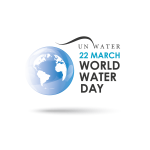 Now a tropical depression, Florence hovered primarily over North and South Carolina over the weekend, dumping record-breaking rainfall in those states and killing at least 17 people. Remnants of the system are heading north, bringing rain through Tuesday.
Now a tropical depression, Florence hovered primarily over North and South Carolina over the weekend, dumping record-breaking rainfall in those states and killing at least 17 people. Remnants of the system are heading north, bringing rain through Tuesday.
The storm made landfall near Wrightsville Beach, N.C. on Sept. 14, causing more than one million power failures and at least 16 deaths over the weekend, according to the New York Times. Tropical Depression Florence slowly flooded cities, endangering communities from the coastline to the mountains, and requiring more than 1,000 rescues.
Karen Clark & Company (KCC) estimates that insured losses from Hurricane Florence will be $2.5 billion, which includes the privately insured wind, storm surge, and inland flooding damage to residential, commercial, and industrial properties and automobiles, but does not include National Flood Insurance Program losses.
KCC reports:
On Sept. 14, Florence made landfall in North Carolina with maximum sustained wind speeds around 90 mph. As the storm slowly passed southwest over South Carolina on Sept. 15, the hurricane weakened to a tropical storm and made a wide turn to the north. By Sept. 16, Florence had become a tropical depression in northeastern South Carolina.
Peak surge from Hurricane Florence reached 10 feet in New Bern, North Carolina, and other areas of the state including Beaufort and Wilmington had significant storm surge impacts. Locations at the heads of shallow bays, where the water is more easily pushed ashore by a hurricane’s high wind speeds, experienced the most coastal inundation.
Although this storm is winding down, there may be more to come. “We’re now in the peak of hurricane season, and the season still has a long way to go,” Dr. Gerry Bell, lead seasonal hurricane forecaster for the National Oceanic and Atmospheric Administration told the Times. He added, “There will be more storms—that’s a definite. Where exactly they track, and when or if they’ll make landfall—that’s what’s not predictable this far in advance.”
Florence Highlights
▪Made landfall near Wrightsville Beach, North Carolina, with Category 1 wind speeds
▪Reached peak intensity of 140 mph on Sept. 10, but weakened before impacting the U.S. coast and spared the Carolinas from major hurricane impacts
▪Expected intensification to a Category 5 hurricane did not occur
▪Slow forward speed decreased to 6 mph prior to landfall and reached as low as 2 mph once inland
▪Brought heavy precipitation in excess of 30 inches to parts of North Carolina
▪Peak storm surge reached 10 feet in New Bern, North Carolina

 On March 22, annual
On March 22, annual 

 As we have witnessed these past two months, Hurricanes Harvey, Irma and Maria devastated many parts of the south coast and the economies of Texas, Florida and Puerto Rico. The damage from the storms is expected to halt U.S. GDP by an
As we have witnessed these past two months, Hurricanes Harvey, Irma and Maria devastated many parts of the south coast and the economies of Texas, Florida and Puerto Rico. The damage from the storms is expected to halt U.S. GDP by an